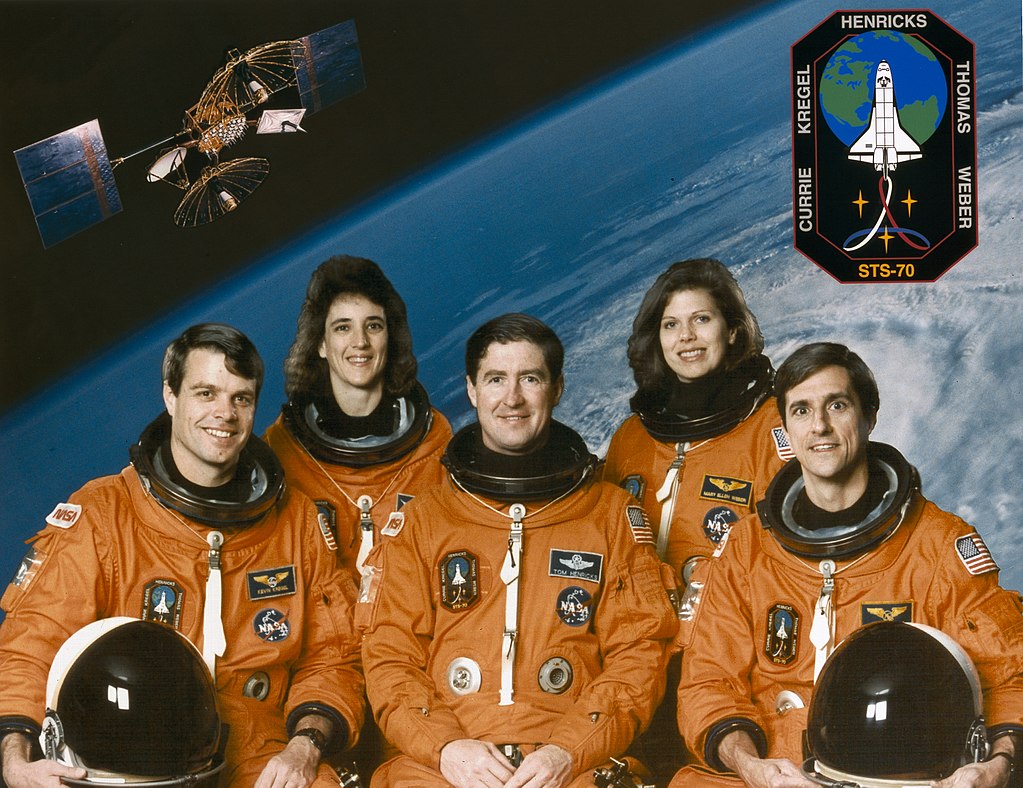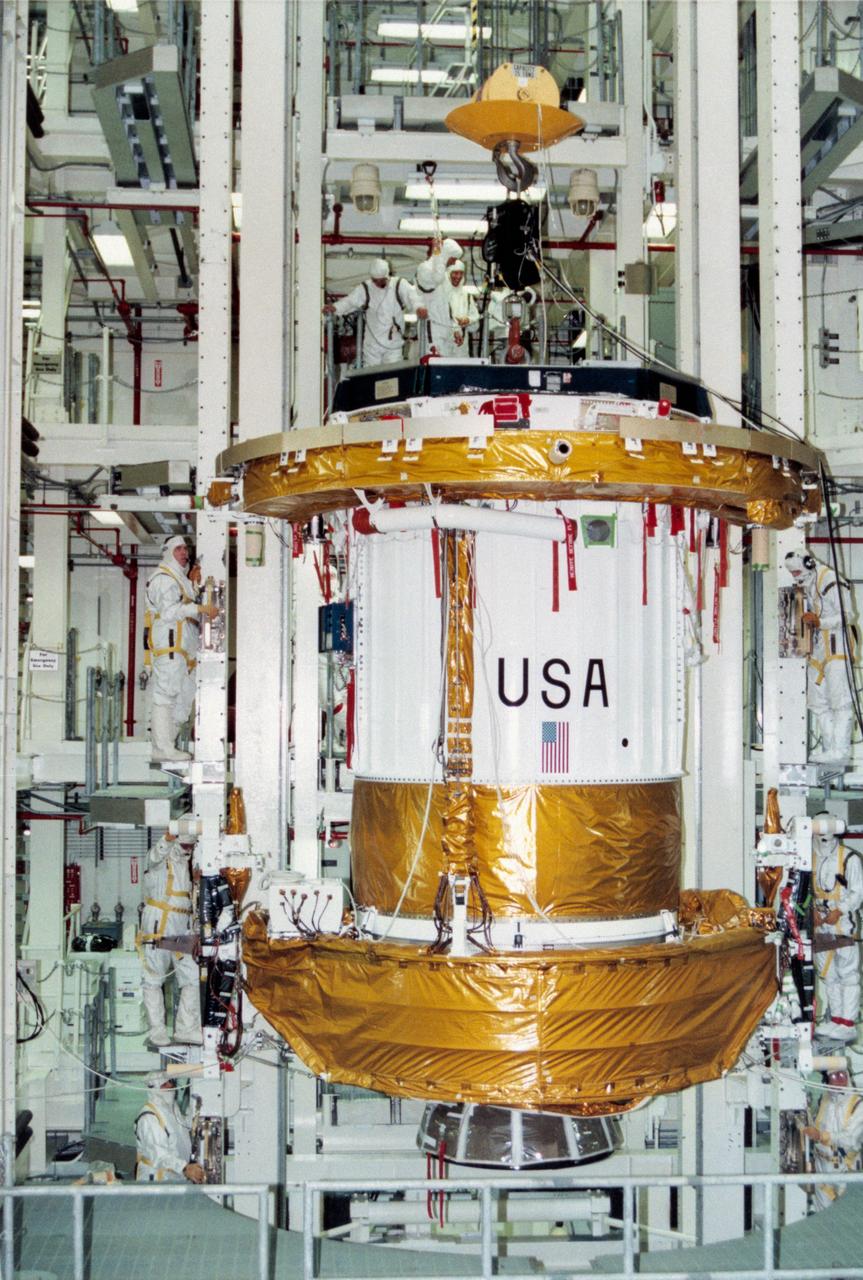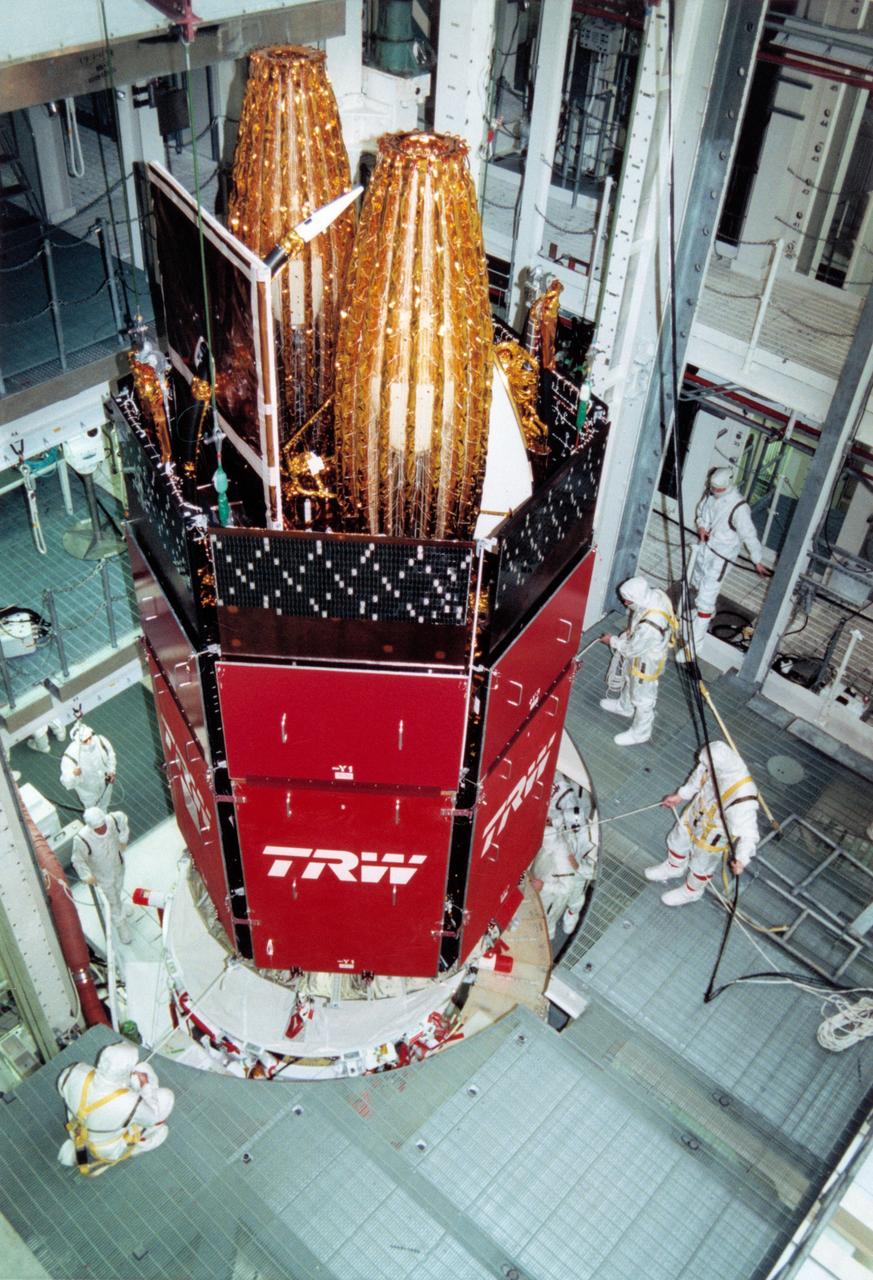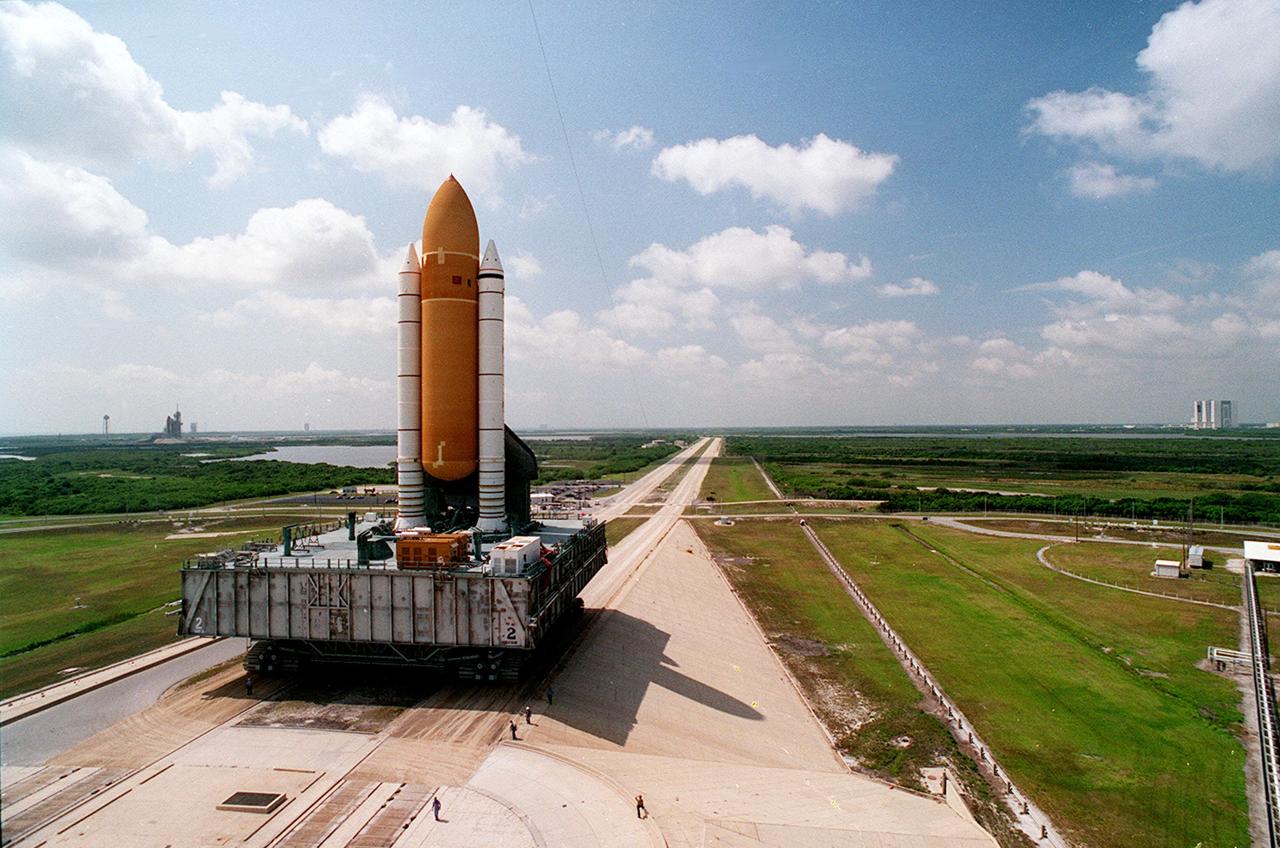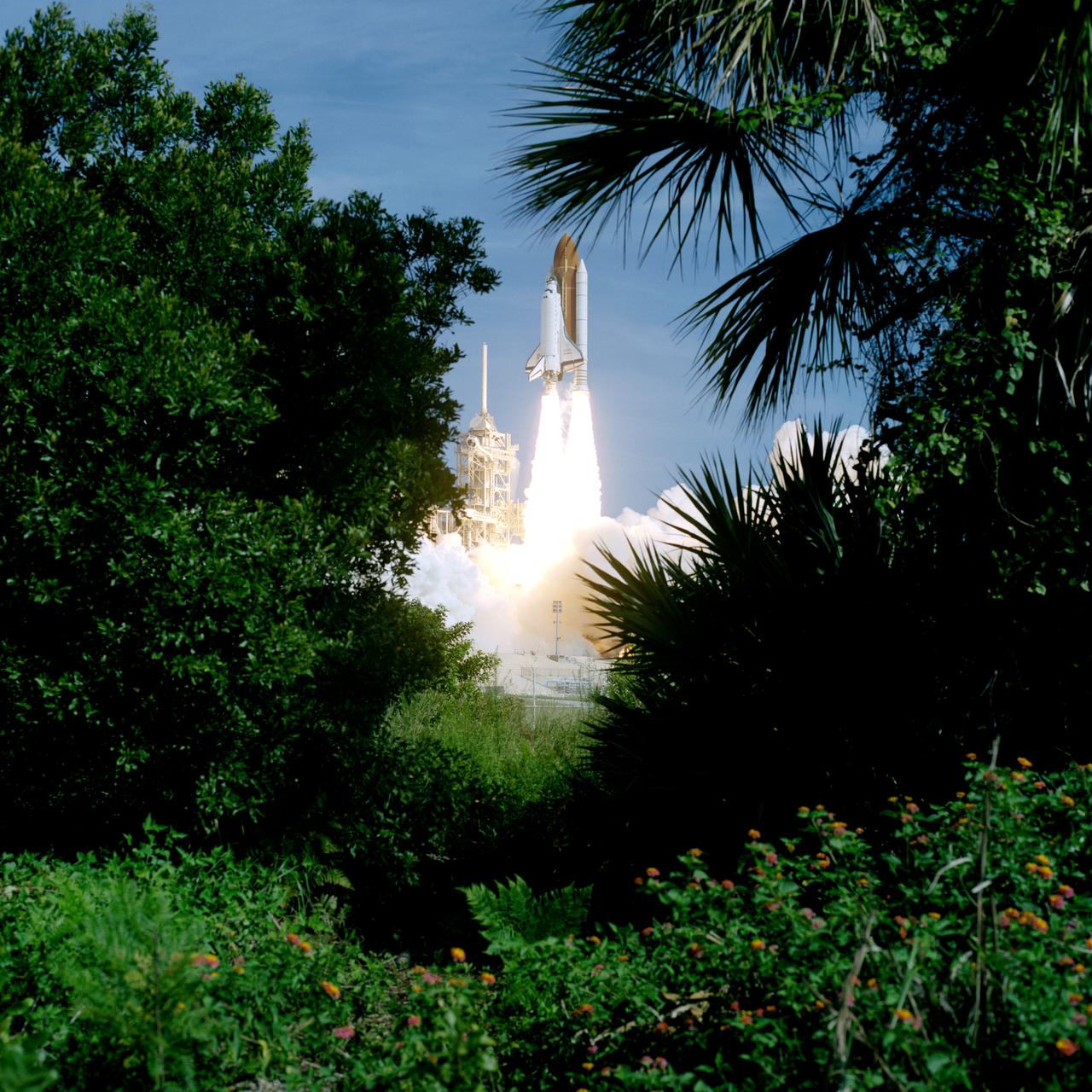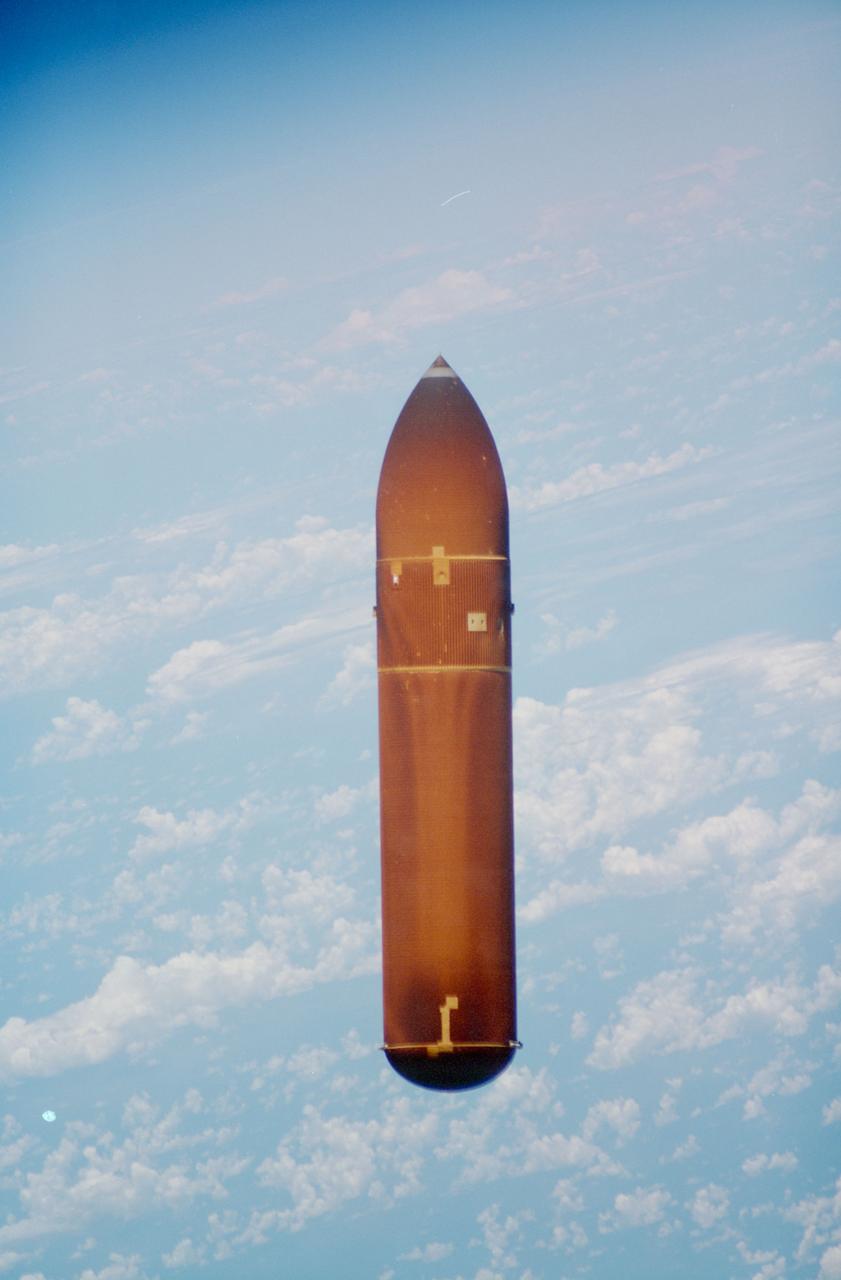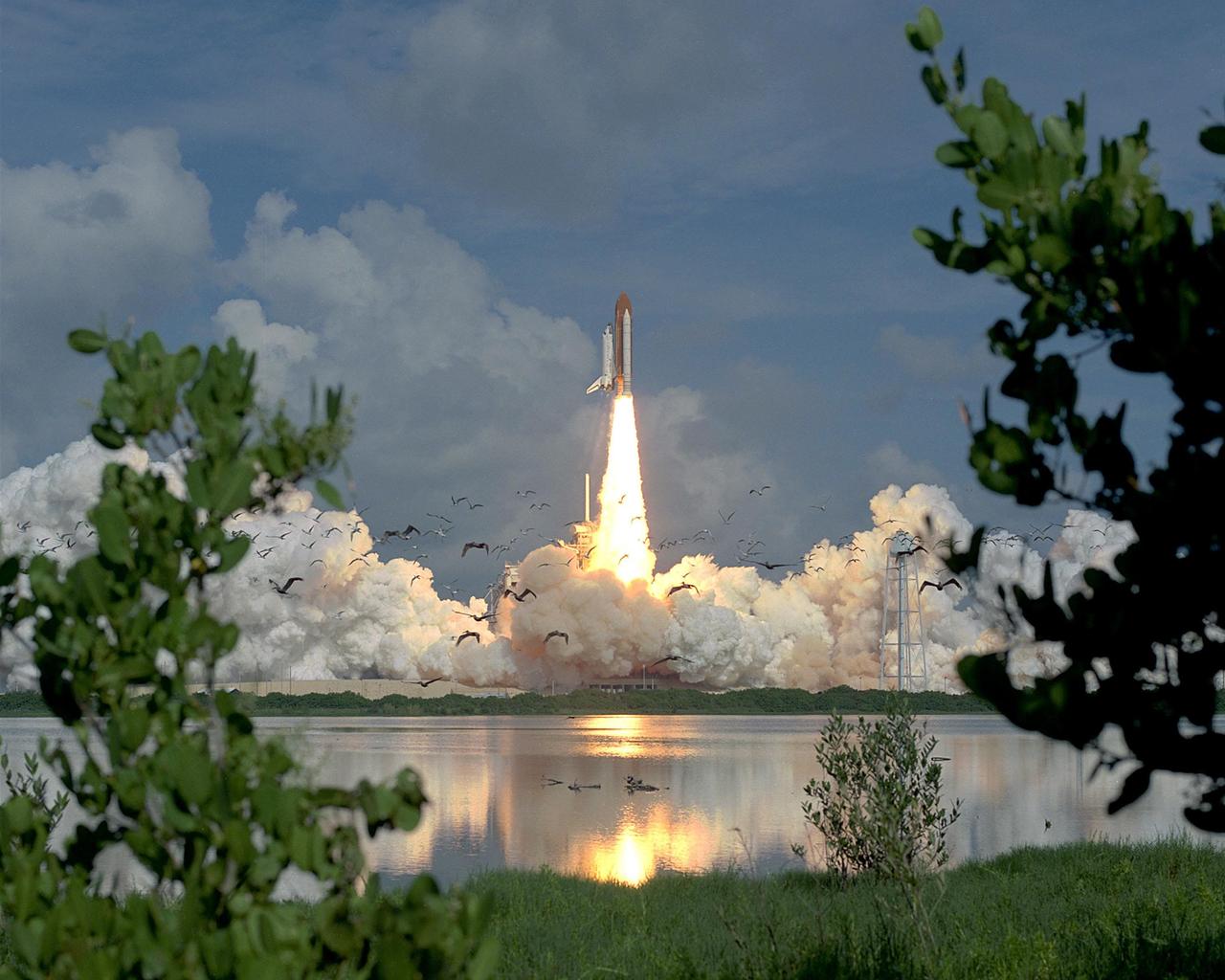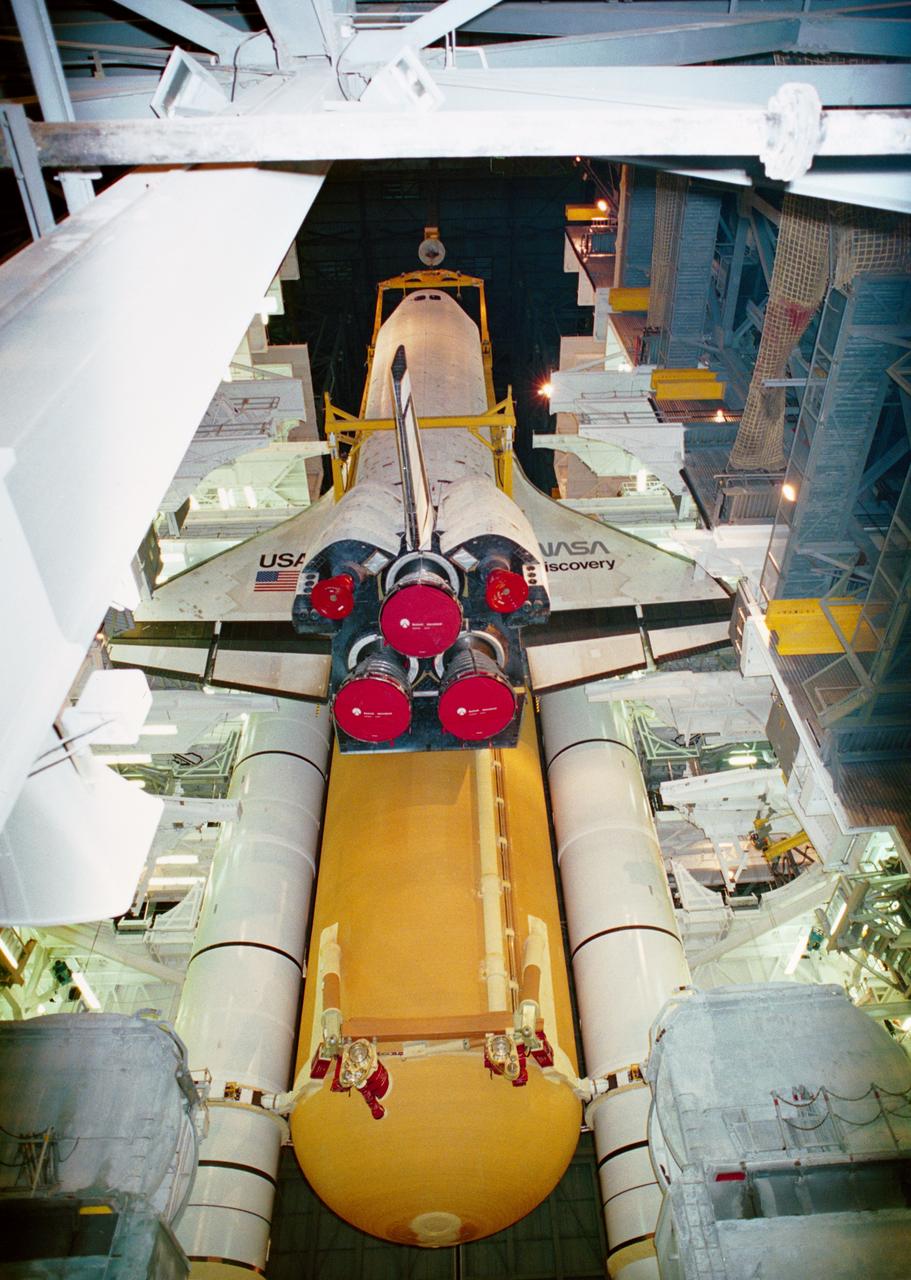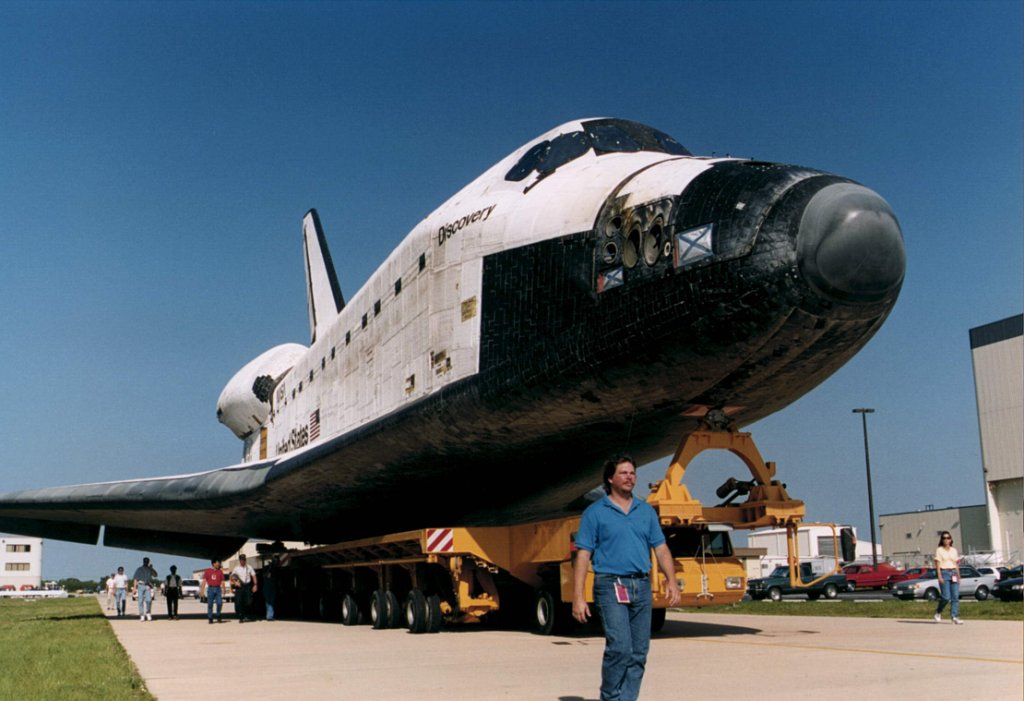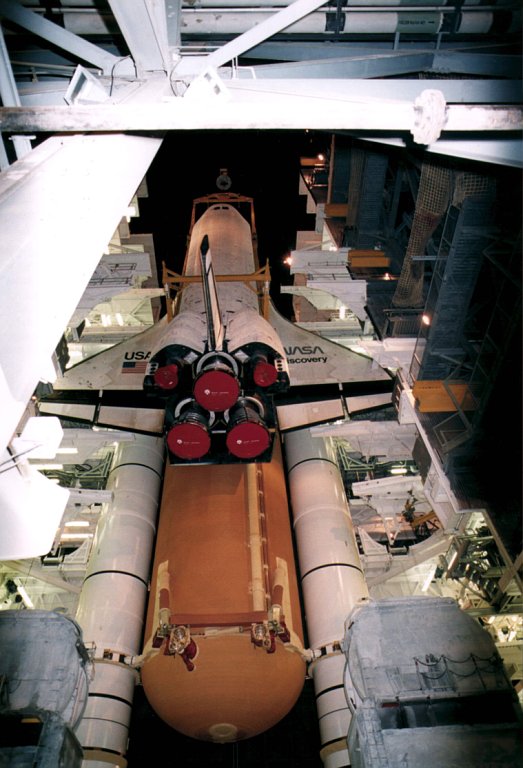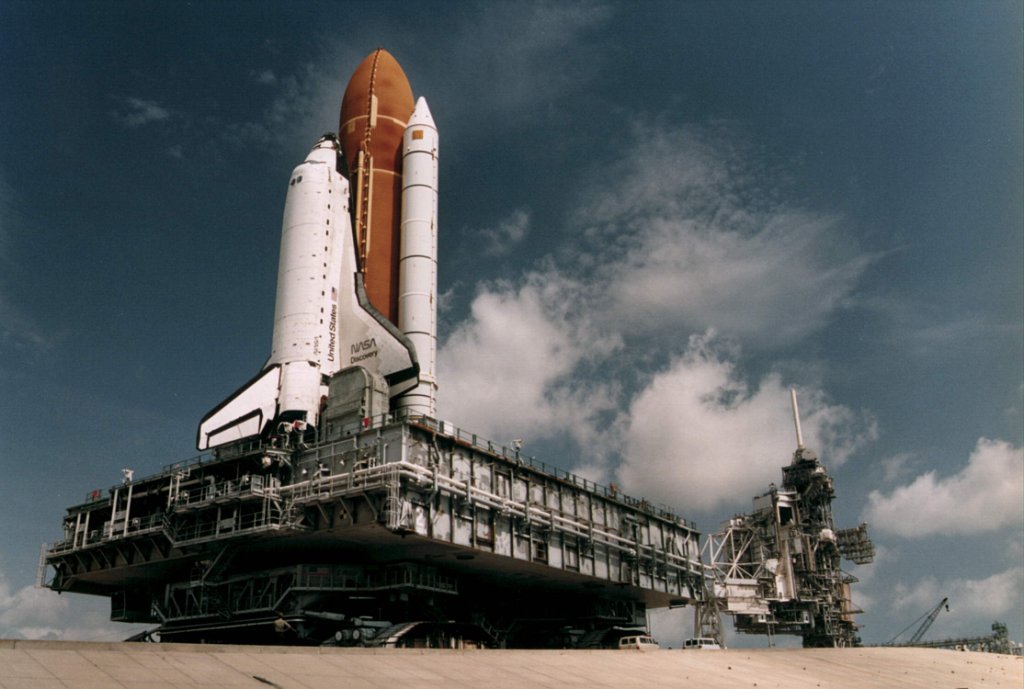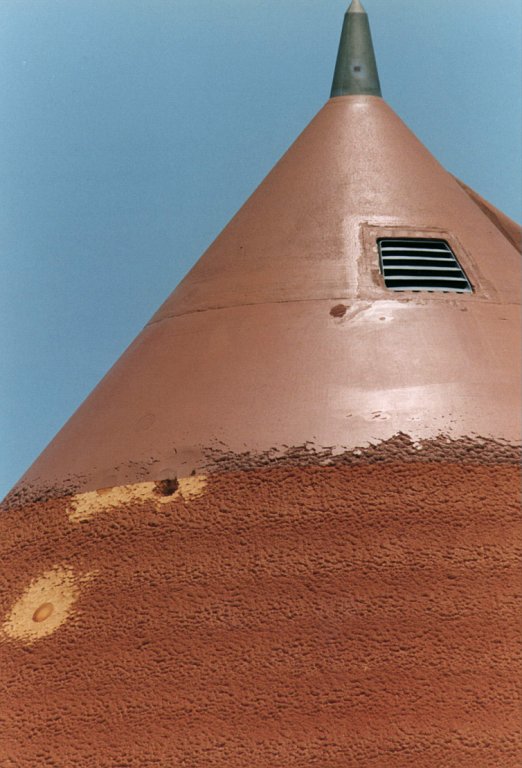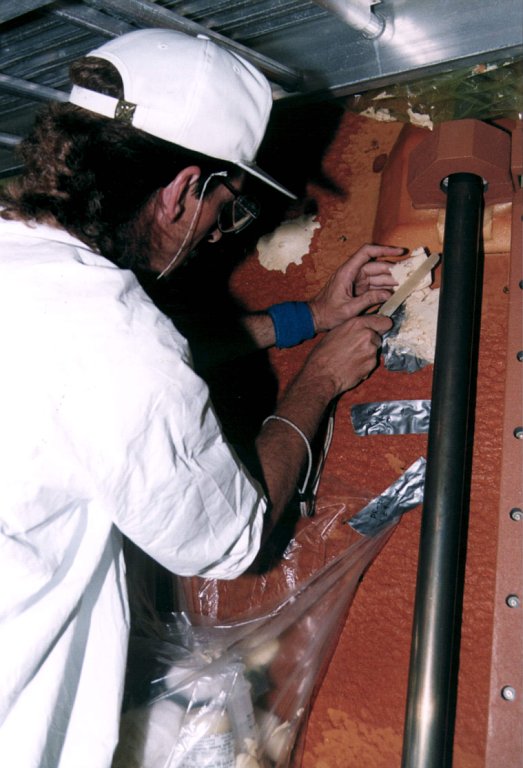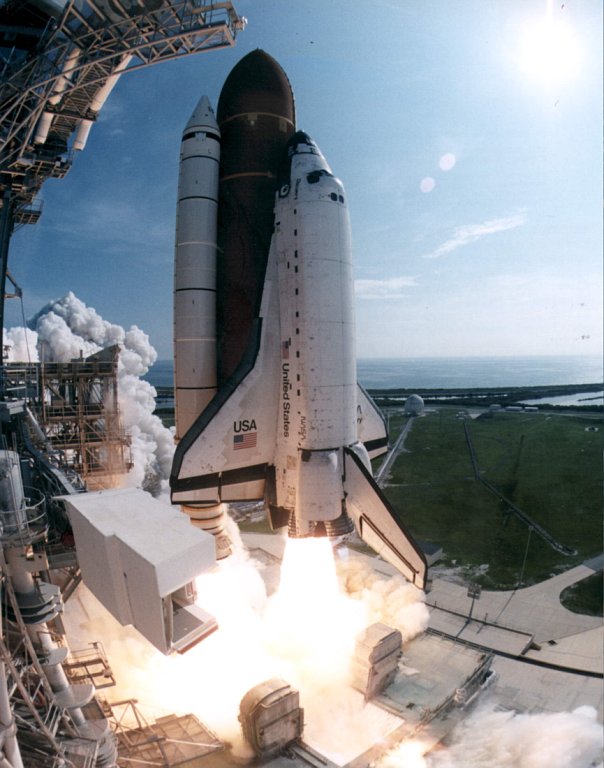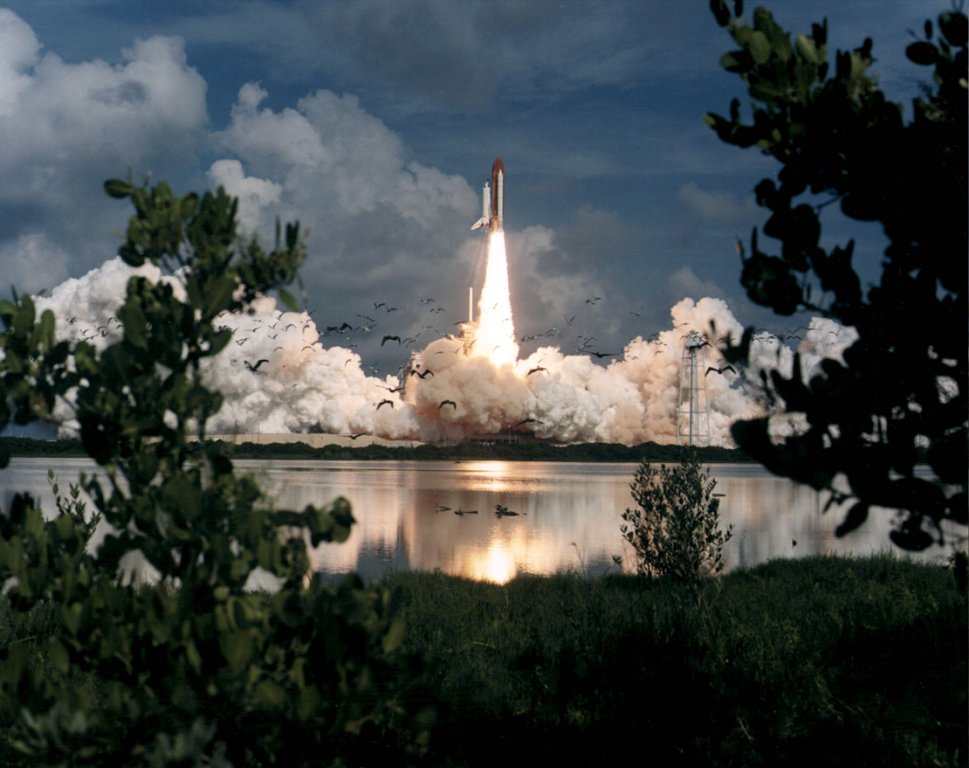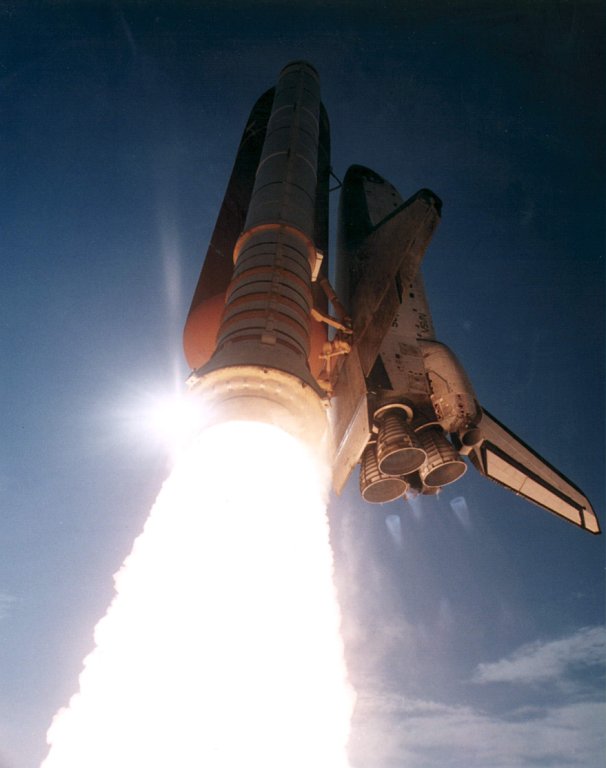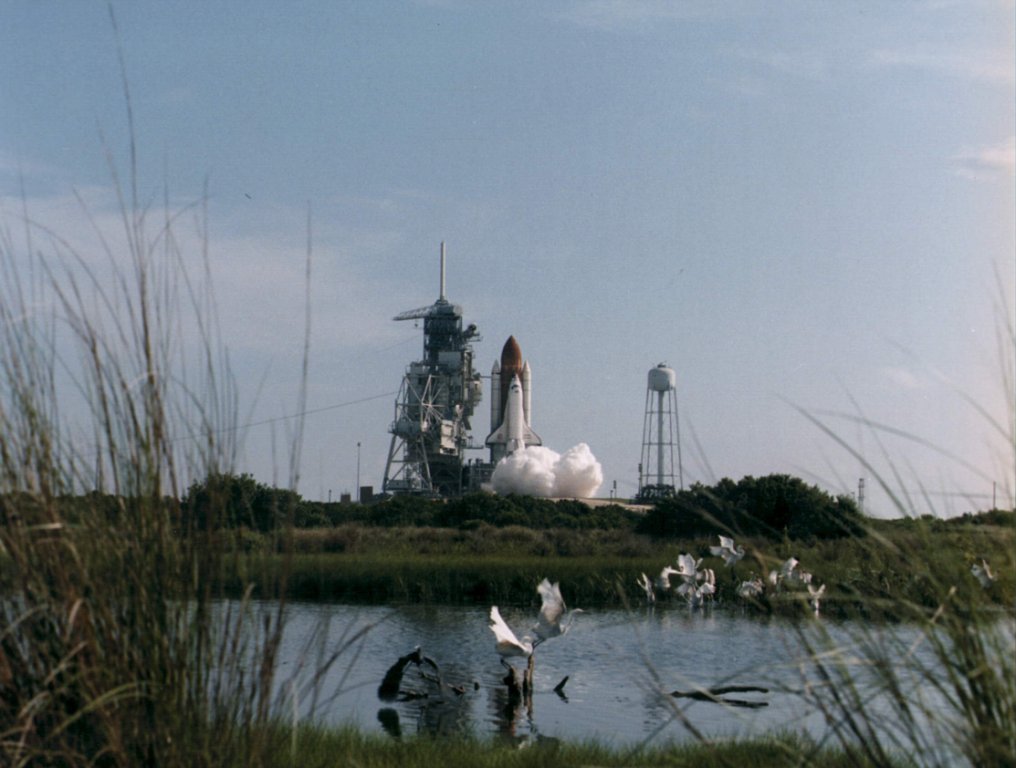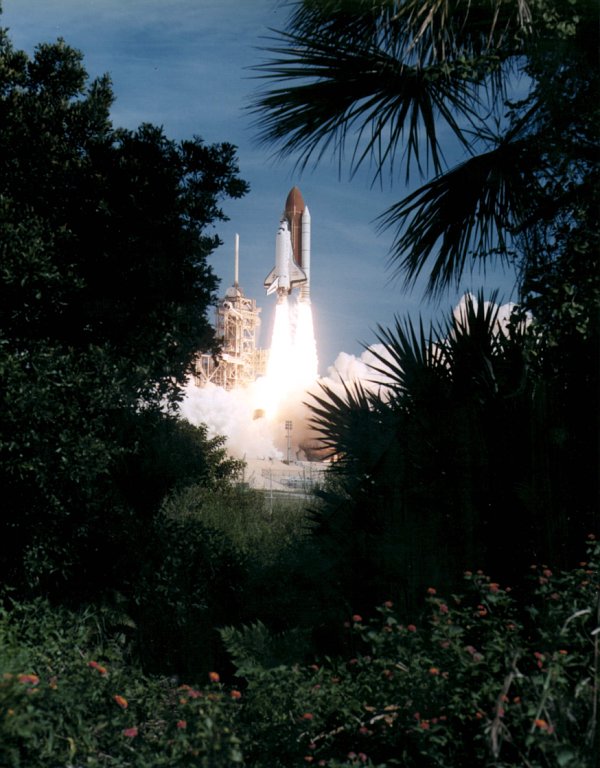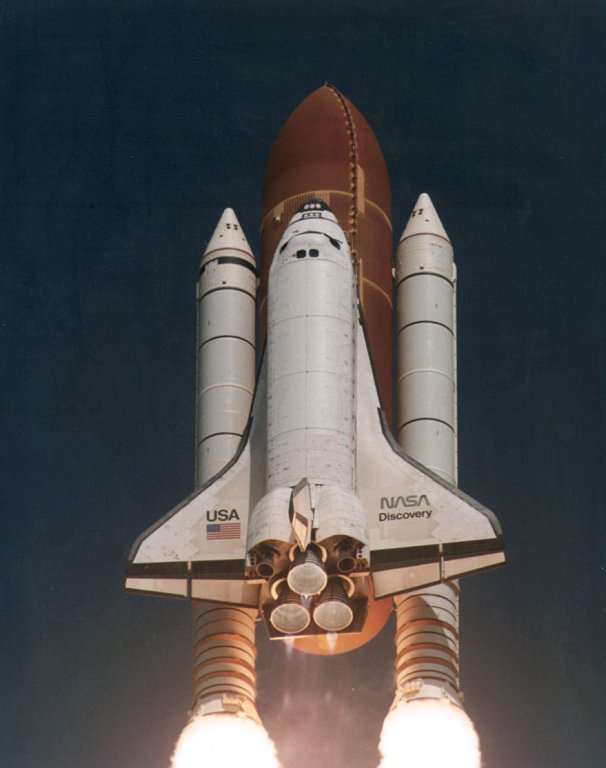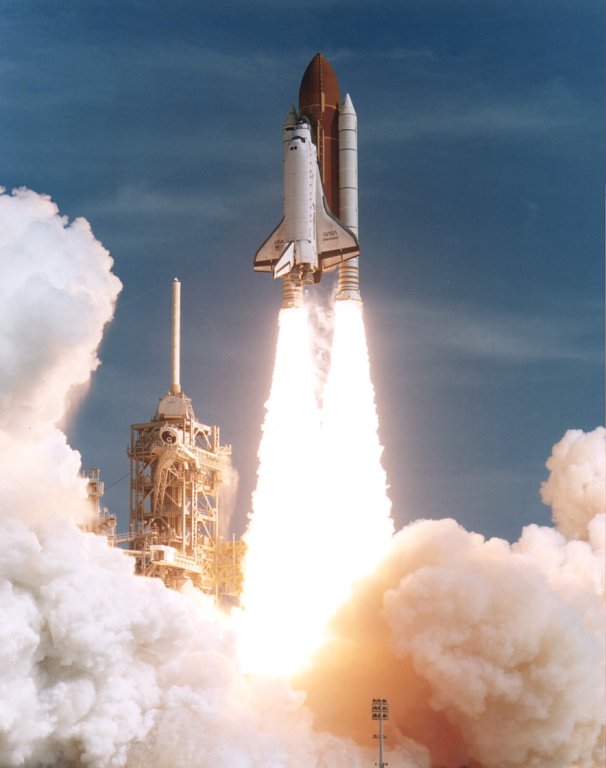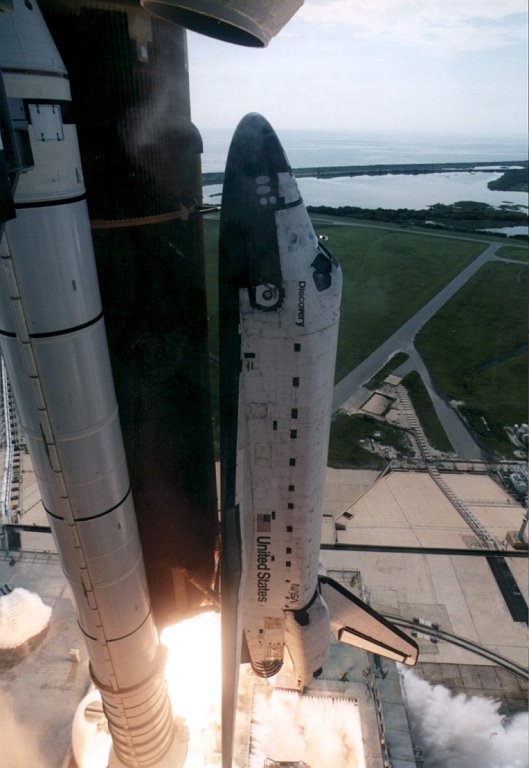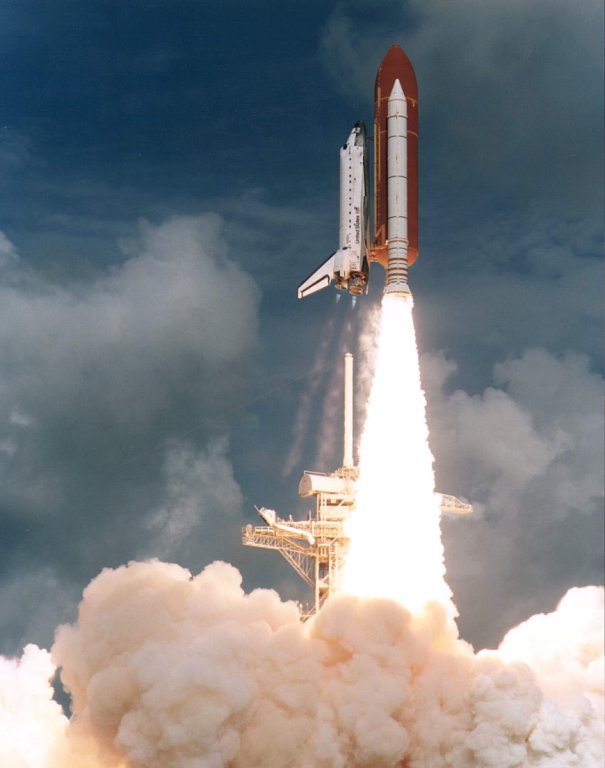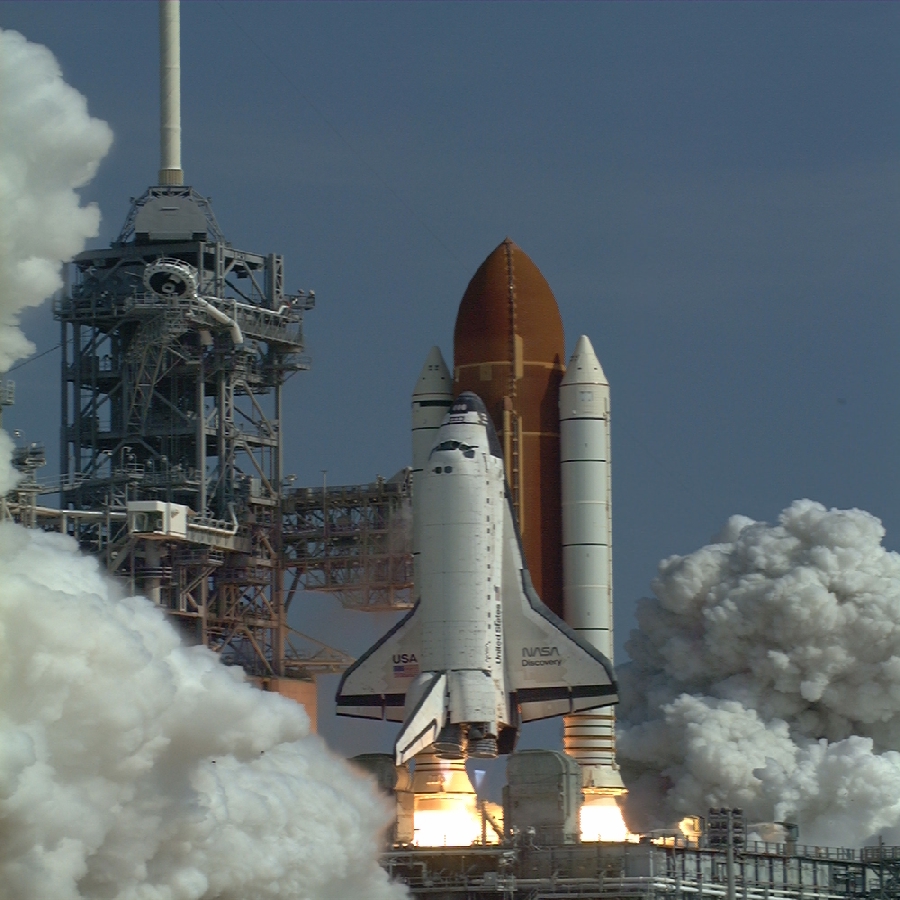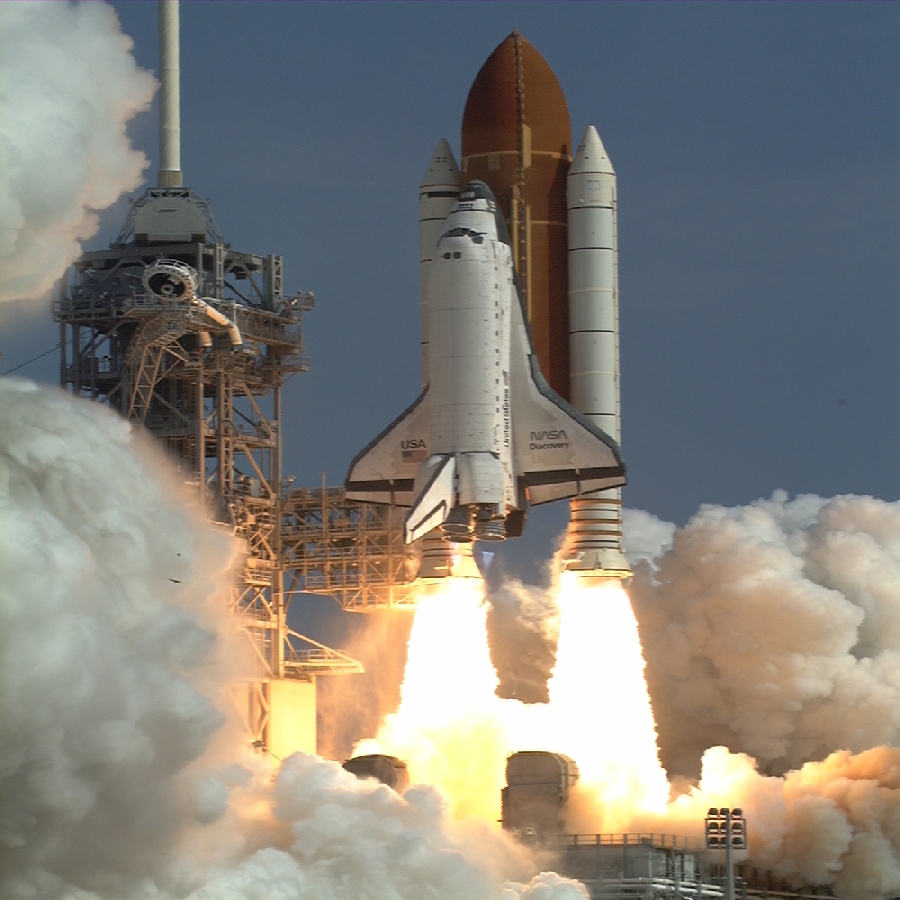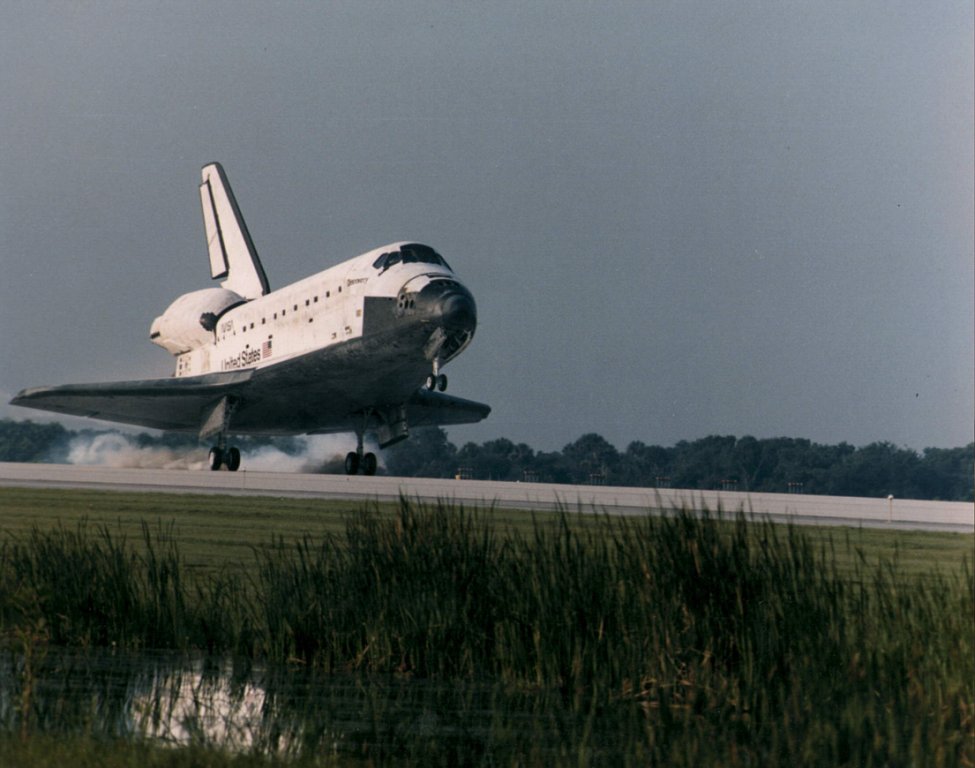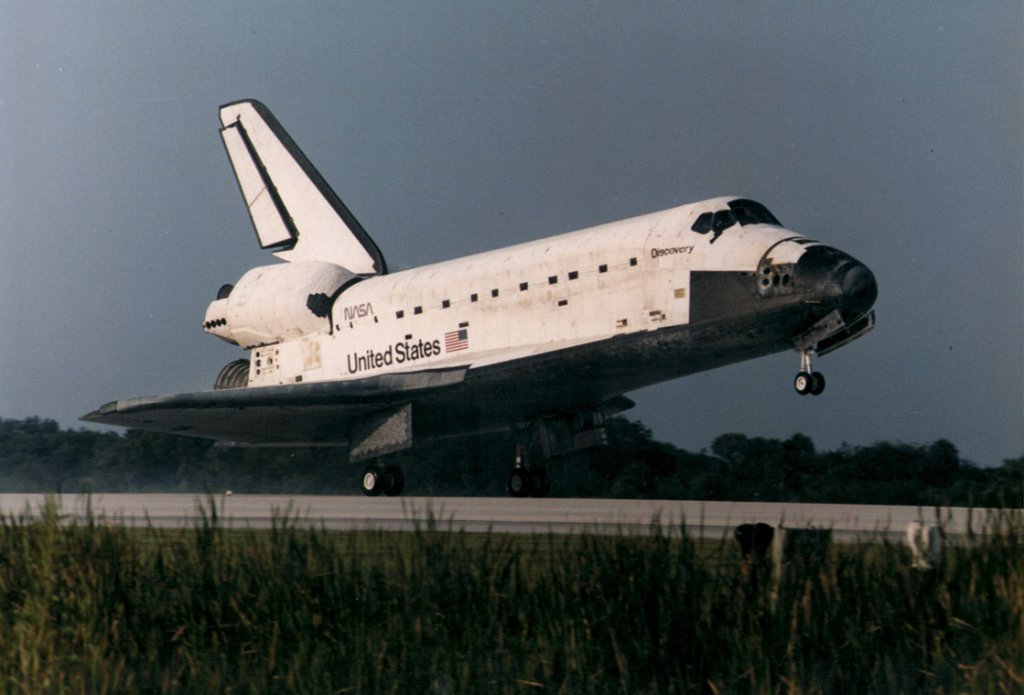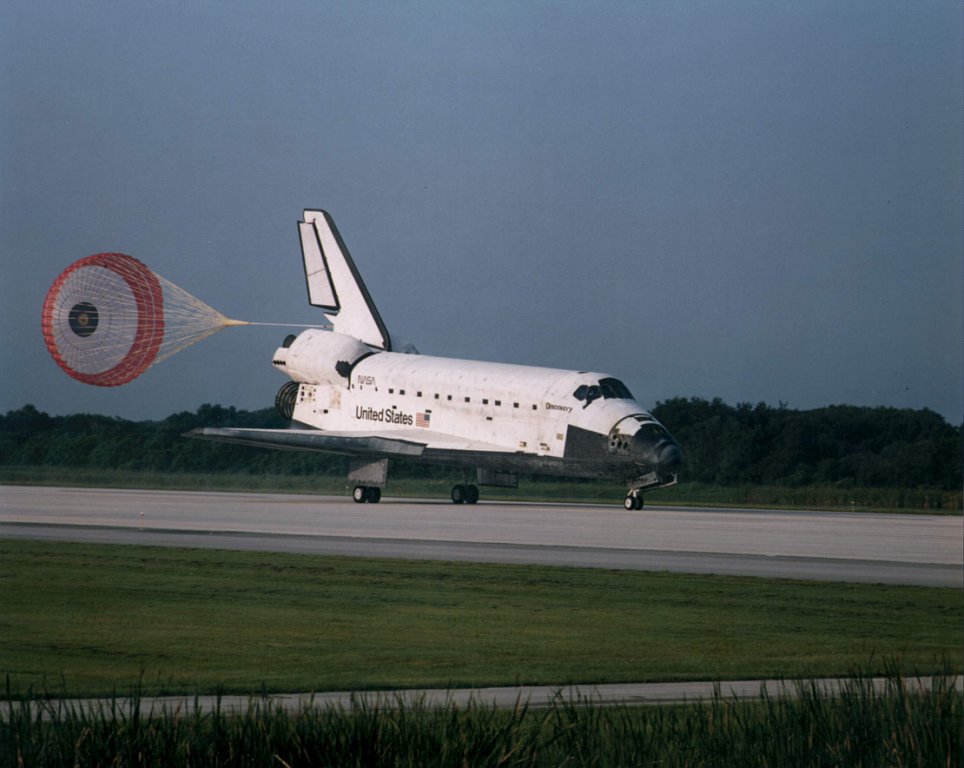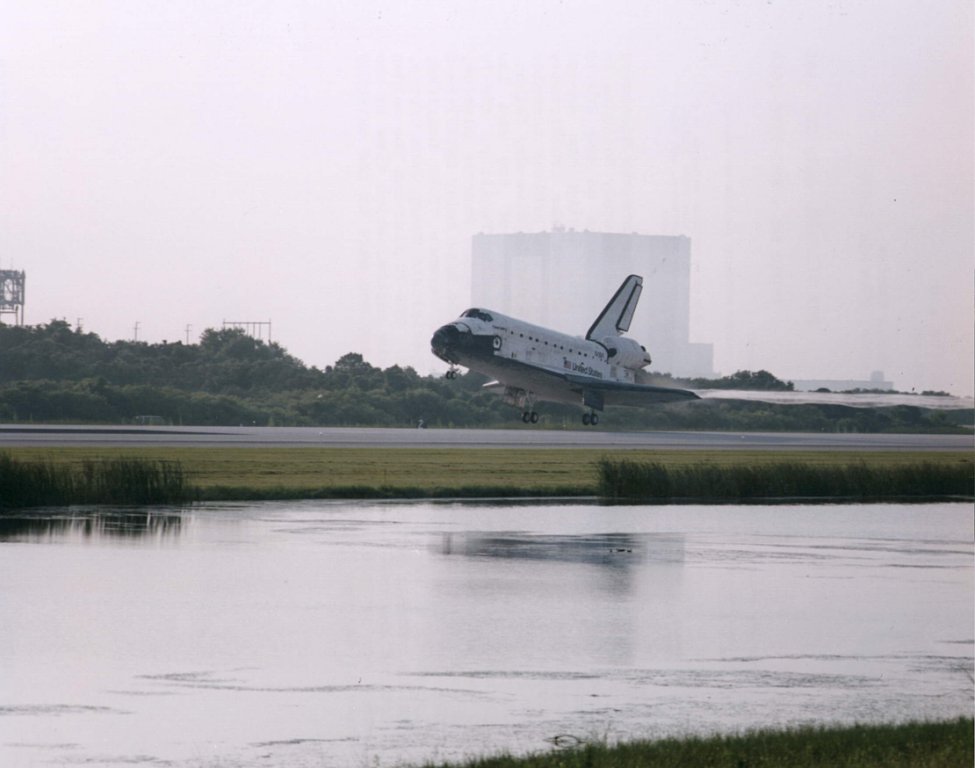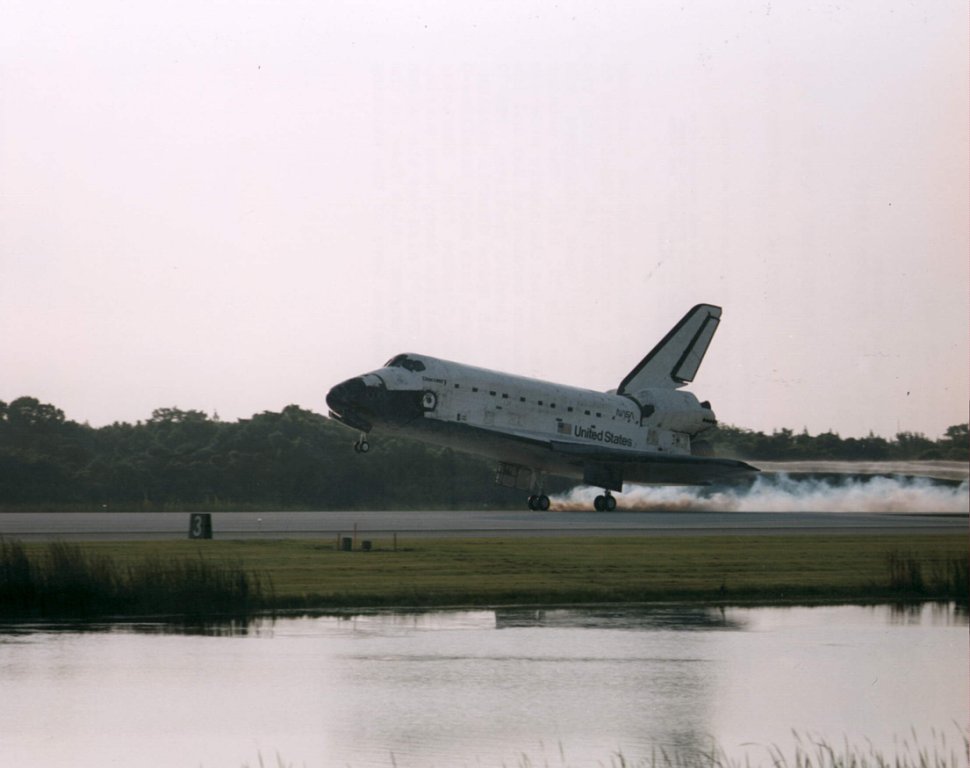STS-70 Fact Sheet
By Cliff Lethbridge

STS-70 — Discovery
70th Space Shuttle Mission
21st Flight of Discovery
Crew:
Terence “Tom” Henricks, Commander
Kevin R. Kregel, Pilot
Nancy Jane Currie, Mission Specialist
Donald A. Thomas, Mission Specialist
Mary Ellen Weber, Mission Specialist
Orbiter Preparations:
Tow to Orbiter Processing Facility – February 11, 1995
Rollover to Vehicle Assembly Building – May 3, 1995
Rollout to Launch Pad 39B – May 11, 1995
Rollback to Vehicle Assembly Building – June 8, 1995
Rollout to Launch Pad 39B – June 15, 1995
Launch:
July 13, 1995 – 9:41:55 a.m. EDT. Launch was originally scheduled for June 22, 1995 following STS-71, which was targeted for early June. However, the missions were flip-flopped following Russian processing delays associated with STS-71.
This resulted in an accelerated launch schedule for Discovery, now scheduled for launch no earlier than June 8, 1995, with STS-71 to follow later in June.
However, nature had other plans.
Following an extended Memorial Day weekend holiday, Shuttle workers discovered that Northern Flicker Woodpeckers at Launch Pad 39B had pecked about 200 holes in foam insulation on Discovery’s external fuel tank. Some holes were as much as four inches deep.
Attempts to repair the damage at the launch pad were unsuccessful, so Discovery was rolled back to the Vehicle Assembly Building on June 8, 1995. Launch was reset for July 13, 1995. Repairs to the external tank were completed, and Discovery was returned to Launch Pad 39B on June 15, 1995.
A variety of noisemakers and physical deterrents were installed at both Space Shuttle launch pads as a result of the woodpecker damage. In addition, permanent human woodpecker spotters were deployed at the launch pads around the clock.
July 13 launch was delayed 55 seconds at the T-31 second mark when engineers needed to verify that range safety signals were being properly received by a destruct device on the external tank.
Landing:
July 22, 1995 – 8:02:00 a.m. EDT at Runway 33, Kennedy Space Center. Rollout distance was 8,465 feet. Rollout time was 57 seconds. Mission duration was 8 days, 22 hours, 20 minutes, 5 seconds. Landing occurred during the 143rd orbit.
Landing was delayed one day due to poor weather at the Kennedy Space Center.
Mission Summary:
The Tracking and Data Relay Satellite-G (TDRS-G), a NASA communications satellite to augment the existing TDRS cluster, was deployed to geosynchronous orbit using an Inertial Upper Stage (IUS) booster.
The crew performed a variety of experiments. Biological Research in Canisters (BRIC) involved investigations of physiological processes in plants, insects and small invertebrate animals.
Bioreactor Development System (BDS) used colon cancer cells to test bioreactor performance in microgravity. The experiment yielded tissue cultures better than any seen previously. National Institute of Health-R-2 experiment featured a suite of investigations into the effect of microgravity on rodent pre-natal and post-natal development.
Commercial Protein Crystal Growth (CPCG) experiment utilized the Protein Crystallization Facility (PCF). The crew successfully grew crystals of alpha interferon, used to treat human viral hepatitis B and C.
Other experiments included the Space Tissue Loss-B (STL-B) and Hand-Held, Earth-Oriented, Cooperative, Real-Time, User-Friendly, Location Targeting and Environmental System (HERCULES), a camera system designed to document locations on Earth.
Microencapsulation in Space-B yielded a purer type of wound-healing antibiotic than can be produced on Earth, but only a tiny amount could be produced.
Midcourse Space Experiment (MSX) used the Shuttle as a tracking and calibration target for a military satellite. Military Applications of Ship Tracks (MAST) analyzed how pollutants from ships affect the reflective property of clouds.
Other payloads included Radiation Monitoring Equipment-III (RME-III), Objective of Window Experiment (WINDEX), Visual Function Tester-4 (VFT-4) and Shuttle Amateur Radio Experiment (SAREX), yielding about 50 radio contacts a day while the experiment was active.
SELECTED NASA PHOTOS FROM STS-70
